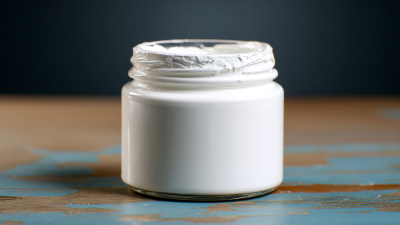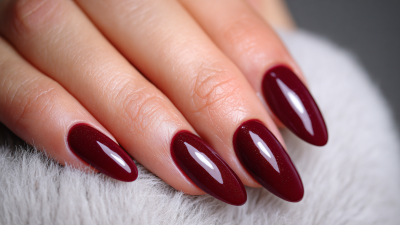Leave Your Message
-
Phone
-
E-mail
-
Whatsapp


When embarking on any creative project, the foundation you choose can significantly impact the overall outcome. One essential element that often gets overlooked is the primer, specifically the Acid Free Primer. These primers are crucial for artists, crafters, and DIY enthusiasts alike, as they ensure that your chosen medium adheres well without the risk of deterioration over time.

In this ultimate guide, we will explore the importance of using acid-free products, the varied options available in the market, and tips to help you select the best Acid Free Primer tailored to your specific projects. Whether you're working with canvas, wood, or paper, understanding the benefits and application techniques of acid-free primers will elevate your work and preserve your creations for years to come.
Join us on this journey to discover how to optimize your artistic endeavors with the right primer!
When embarking on creative projects, particularly in the realms of art and craft, understanding the importance of acid-free primers is essential. Acid-free primers are specially formulated to prevent damage to the underlying surfaces, ensuring the longevity of the artwork. Unlike standard primers, which can contain acidic components that may degrade materials over time, acid-free options are designed to offer protection against discoloration and deterioration. This makes them particularly vital when working with delicate papers or canvases, as they help maintain the integrity of your projects for years to come.
In addition to their protective qualities, acid-free primers can enhance the adherence of subsequent layers of paint or media, providing a smoother and more resilient foundation. This is similar to the advances seen in fields such as cell-free gene expression, where alternative methods are used for more effective outcomes. Just as lipid-based nanoparticles serve as efficient carriers in nanodelivery systems, acid-free primers support the artist's intention by ensuring that the layers applied remain vibrant and intact. Choosing the right acid-free primer for your project can pave the way for a successful and enduring artistic journey.
When selecting an acid-free primer for your projects, several key factors play a crucial role in ensuring you achieve the desired results. First and foremost, consider the surface you will be working with. Whether you're applying the primer on paper, wood, or canvas, each material requires a different formulation to ensure optimal adhesion and longevity. A primer designed specifically for paper, for instance, will be thinner and more absorbent compared to one intended for wood or fabric, ensuring that it does not warp or damage the underlying surface.

Another important factor is the drying time and consistency of the primer. Depending on your project timeline and the finish you are aiming for, you may prefer a quick-drying primer or one that allows for more extended working time. The consistency can also affect the application method; for example, a thicker primer may require brushing or rolling, while a thinner variant can be easily sprayed for a smooth and even coat. Be sure to test a small area first to see how the primer interacts with your chosen surface, as this can save you time and materials in the long run.
When it comes to crafting, selecting the right primer is crucial, especially for projects requiring acid-free materials. Acid-free primers are essential for ensuring that your artwork remains vibrant and preserved over time, preventing deterioration caused by acidity. According to a report by the Fine Arts Conservation Group, using acid-free materials can increase the longevity of projects by as much as 200%. This statistic emphasizes the importance of choosing the right primer for various crafting needs.
Here are the top five acid-free primers ideal for different applications. First, the *Liquitex Basics Acrylic Gesso* is favored for its versatility, suitable for canvas and wood. It fosters excellent adhesion and is ideal for acrylic and oil paints. Second, the *Daler Rowney Acrylic Primer* is a highly recommended choice for artists who work with heavy body acrylics thanks to its smooth application. For mixed-media projects, consider the *Ranger Multi-Medium*, which offers an acid-free base and dries clear, making it perfect for a variety of surfaces. The *Martha Stewart Crafts Acrylic Craft Paint* is designed for non-porous surfaces and offers a durable finish, while the *Sennelier Acrylic Ground for Oil Paints* enhances oil paint adherence on non-traditional surfaces. These selections provide a great starting point for artists looking to ensure their projects are both acid-free and of the highest quality.
When selecting an acid-free primer for your art or craft projects, testing its effectiveness is crucial to ensure the best results. Start by applying a small amount of primer on a sample surface similar to your final project material. Once dry, assess how well it adheres and whether it prevents your chosen medium from bleeding or discoloring. A reliable acid-free primer should create a smooth, even base that allows for even application of paint or other materials.
**Tip:** To gauge the primer’s performance, try layering different mediums on top, such as watercolor or acrylic paint. This will help you see how the primer interacts, revealing whether it keeps colors true or alters their appearance.
Another effective test is the burn test, where you lightly ignite a small sample of the dried primer on paper. A successful acid-free primer will not produce a noticeable odor or residue, indicating its compatibility with archival-quality projects.
**Tip:** Always check the manufacturer’s instructions for recommended drying times and the versatility of the primer on various surfaces to maximize your results.
| Primer Type | pH Level | Drying Time | Application Method | Surface Compatibility | Effectiveness Rating (1-10) |
|---|---|---|---|---|---|
| Water-Based | 7.0 | 30 minutes | Brush, Roller | Wood, Canvas | 8 |
| Oil-Based | 6.5 | 1 hour | Brush, Spray | Metal, Wood | 9 |
| Acrylic | 7.5 | 15 minutes | Roller, Spray | Canvas, Paper | 8 |
| Shellac | 5.0 | 30 minutes | Brush, Spray | Wood, Metal | 7 |
When it comes to applying acid-free primer for your projects, technique can make all the difference in achieving flawless results. Begin by thoroughly cleansing and moisturizing your skin to create a smooth canvas. This preparation step is crucial, particularly for mature skin types where hydration can combat fine lines and uneven texture. Applying the primer with clean fingers, a brush, or a sponge has its merits; however, using your fingers often allows for better warmth, helping the product blend into the skin more seamlessly.

For optimal application, use a small amount of primer and start at the center of your face, blending outward. This approach ensures that the areas requiring the most coverage receive attention first. It’s also beneficial to let the primer sit for a few minutes before applying any makeup, allowing it to set and form a perfect base. If you’re looking for that radiant finish, consider layering your acid-free primer beneath your foundation for enhanced luminosity and longevity. This method not only helps your makeup last all day but also provides a polished, smooth finish that can withstand the trials of time, especially for those dealing with mature skin issues.






